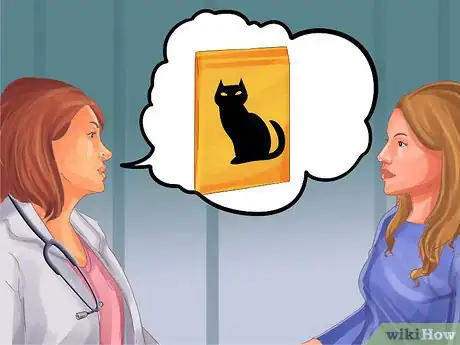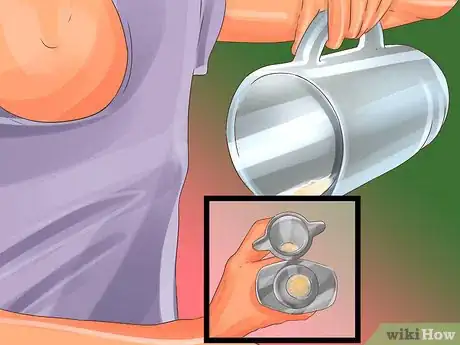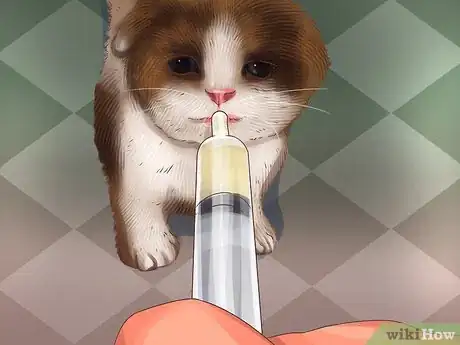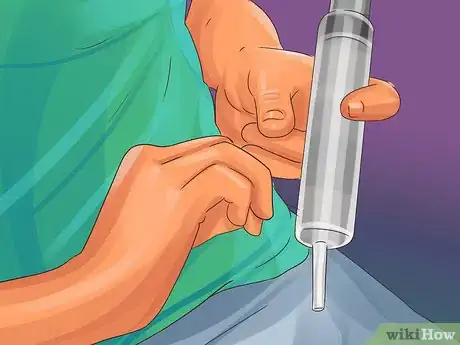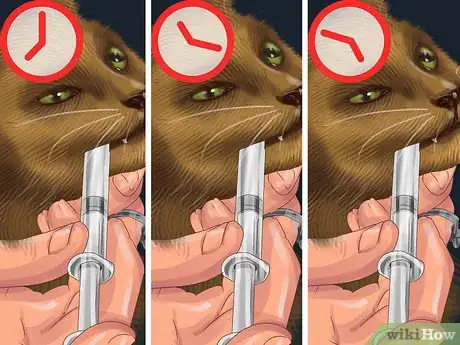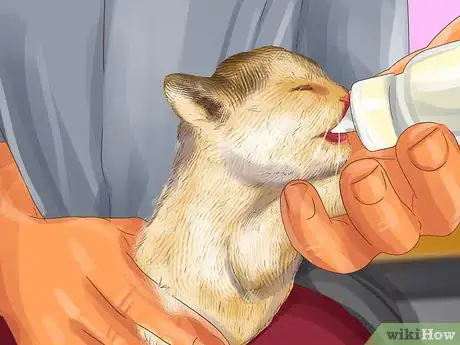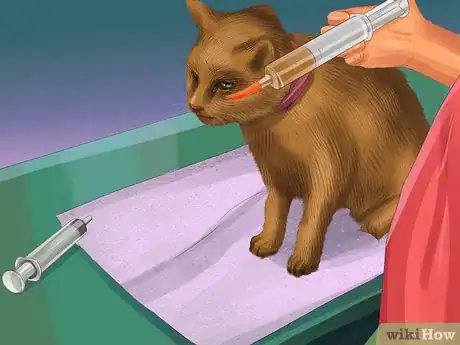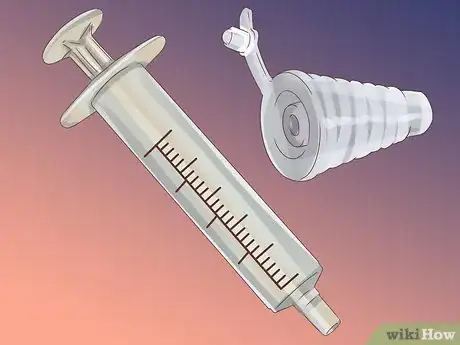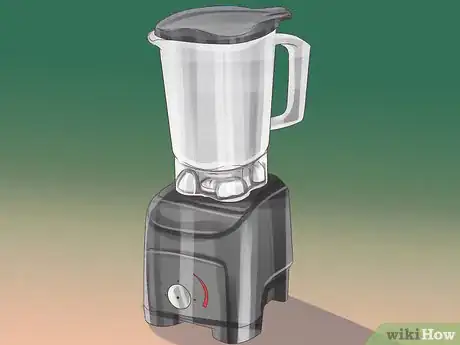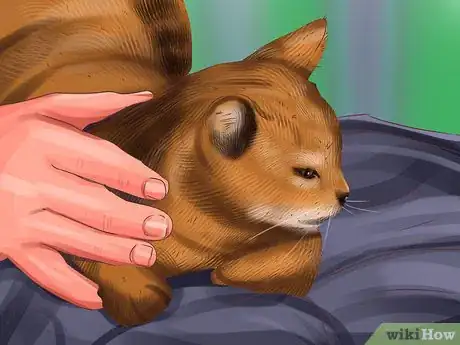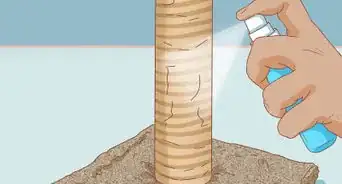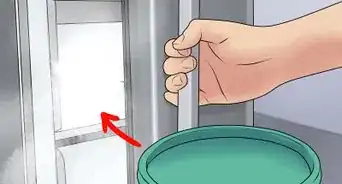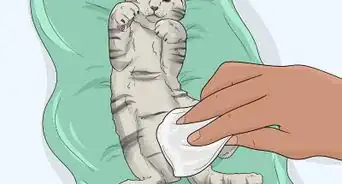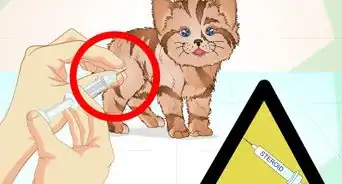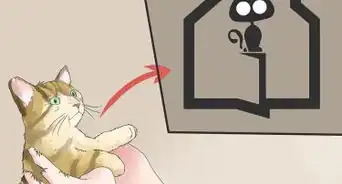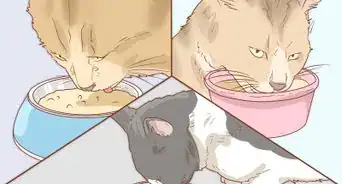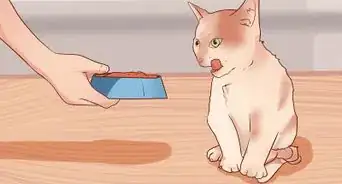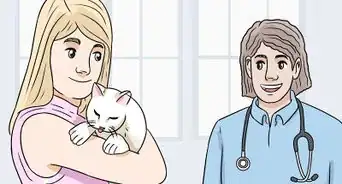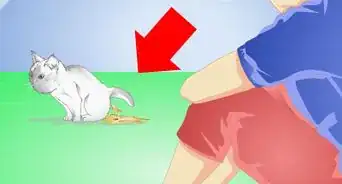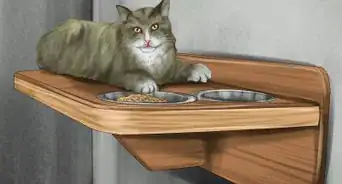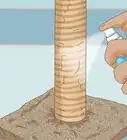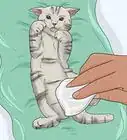This article was co-authored by Ryan Corrigan, LVT, VTS-EVN. Ryan Corrigan is a Licensed Veterinary Technician in California. She received her Bachelor of Science in Veterinary Technology from Purdue University in 2010. She is also a Member of the Academy of Equine Veterinary Nursing Technicians since 2011.
This article has been viewed 15,908 times.
Due to illness or injury, cats may need to be fed through a tube for a set amount of time or indefinitely. It is important to talk over feeding your cat with your vet first. Pick a regular feeding spot and have your supplies on hand to feed your cat. Make sure to comfort your cat during the process. Eventually, you and your cat should adjust to the tube feeding process.
Steps
Feeding Your Cat with the Tube
-
1Talk to your vet about the right food and supplements. Every cat is different. Depending on your cat's health condition, your vet will suggest different types of food and supplements. Make sure you follow your vet's recommendations regarding your cat's diet. Ask any questions you have at the vet's office and feel free to call the vet if you have questions when you get home.[1]
- You should know the type of food to use, the amount to feed your cat each day, and how much to feed at a time. Tube fed cats are not fed meals all at once.
- Your vet can also give you general advice on how to get your cat to cooperate. Vets have vast experience dealing with stressed animals, so your vet's guidance regarding getting your cat to behave is invaluable.
- Ask your vet to show you the proper way to tube feed your cat. They can walk you through the process and let you practice before you have to do it at home.
-
2Blend food at room temperature. Food should be served at room temperature. Prior to blending the food to serve to your cat, make sure it is at roughly room temperature. If you can store food out in the open, do so. If food must be refrigerated first, leave it out for an hour or so prior to feeding. Use a blender or food processor to get the food into a spreadable consistency that flows easily.[2]Advertisement
-
3Inspect the tube before you feed the cat. Make sure that the tube hasn't moved or come out of the stomach. To check if it is in the right place, insert an empty syringe and pull the plunger out. If any food or water comes up, the tube has slipped. Take the cat to the vet.
-
4Insert food into the tube with a syringe. To tube feed a cat, you feed the food into the tube through a syringe. Your vet should provide you with a syringe or advise you where to purchase one. Draw the correct amount of food from the syringe and then feed it into your cat's feeding tube.[3]
- You usually measure the food first. Most syringes have measurements on the side you can use. You can also measure out the food first using measuring cups and then draw it into the syringe.
-
5Feed your cat slowly. Do not simply dump the full contents of the syringe into the feeding tube. Press down on the syringe slowly. Allow the food to flow through the tube and into your cat a little bit at a time. If food is moving slowly, you may want to pause and wait for it to go through the tube before pushing the remaining food into the tube.[4]
- Don't force the syringe or tube if food won't go in. Instead, stop and try again. If it still won't work, gently flush the tube with warm water before trying again.
-
6Flush the tube when you're done. It's important to keep the tube clean for your cat's well-being. After feeding is done, flush out the tube with a small amount of water. Make sure you remove any lingering traces of food from the tube.[5]
- If any food is clogging the tube, place a small amount of soda or juice in the tube. This should flush out lingering food.
-
7Do not hesitate to go to your vet with questions. Tube feeding is fairly easy once you get the hang of it. Most people can successfully tube feed their cats at home. However, if tube feeding becomes a problem for your cat, contact your vet. They should be able to help you troubleshoot any problems.
- If you're really struggling with tube feeding, see if you can schedule a time to come into the office and have your vet show you how to tube feed. Going through a tutorial with your vet can help you learn how to tube feed successfully.
Maintaining Your Routine
-
1Feed your cat several times throughout the day. Cats do not receive all their daily food at once with tube feeding. Food is administered in small amounts throughout the day. Make sure you know how much food to feed your cat and at what intervals to feed it. The timeframe and amounts of food depend on your cat's specific condition, so talk this over with your vet.[6]
-
2Pick a feeding spot. Having a regular feeding spot can make tube feeding go smoother for you and your cat. Choose a spot in your home to tube feed. Ideally, your feeding spot should be somewhere where you can sit comfortably at your cat's level and tube feed.
- Think about your cat's comfort as well. Pick a spot that is quiet and put something down, like a blanket or bed, to keep your cat comfortable during the process.
-
3Keep everything in a tray near the feeding spot. Having your supplies consistently prepared can make tube feeding go smoother. Set out a tray near your feeding spot with the necessary supplies for tube feeding. Have your syringes ready, as well as a cup of water for flushing the tube. If your cat's food can be left out in the open, keep blended food near the feeding spot. Also, have any measuring cups or other devices you use to measure food out near the spot.
- It's a good idea to have paper towels on hand to manage any mess.
-
4Manage the fur near the tube. If possible, keep the fur around the feeding tube shaved to allow yourself easy access. You should also wipe up any food or debris from the area around the tube after cleaning. Talk to your vet about special wipes to clean the area around the tube.
- If you notice any rashes on your cat, they may be having an allergic reaction to cleaning wipes. Take them to the vet to get antibiotic ointment to treat the rash.
Overcoming Challenges
-
1Keep extra supplies on hand. There is always a chance something will get lost during syringe feeding. Have extra syringes and caps on hand. The cap to a tube should be kept on when not feeding, but it's not uncommon for caps to fall off. Due to their small size, they can be difficult to locate. Make sure to get a few extra caps from your vet's office.
-
2Make sure you have a quality blender. It's important to blend the food so it flows easily into the feeding tube. If your food remains solid and chunky, purchase a higher quality blender. Tube feeding will not be successful if you cannot get the food to the right consistency.
- Ask your vet for blender recommendations.
-
3Comfort your cat if they're frightened during feeding times. Cats may become agitated or frightened during tube feeding. If this occurs with your cat, comfort them during the process. Strive to stay calm yourself during feeding, as your cat can pick up on your fear. Feed them in a quiet location and pet and talk to them during the process.[7]
- Allow your cat space after tube feeding to calm down. You can let your cat go somewhere in the home and hide until they feel better.
-
4Consult your veterinarian if you notice physical reactions. Complications with tube feeding are rare. However, the site near the tube may become infected. If you notice signs of an infection, such as reddish skin or discharge, contact your vet for treatment.[8]
- In addition to treating an infection, your vet may be able to provide advice on how to prevent one in the future.
References
- ↑ https://www.vetinfo.com/tube-feeding-cats.html
- ↑ http://www.lbah.com/word/feline/feeding-tubes/
- ↑ https://www.vetinfo.com/tube-feeding-cats.html
- ↑ http://www.lbah.com/word/feline/feeding-tubes/
- ↑ http://www.lbah.com/word/feline/feeding-tubes/
- ↑ https://www.vetinfo.com/tube-feeding-cats.html
- ↑ http://www.pet-happy.com/calm-down-a-frightened-cat/
- ↑ https://vcahospitals.com/know-your-pet/tube-feeding-in-cats
About This Article
To tube feed your cat, talk to your vet about the right food and supplements for your cat’s health condition. Keep the food at room temperature or, if it has to be refrigerated, allow it to sit on the counter for an hour prior to blending it up. Once the food has a smooth consistency, draw the right amount of food out with a syringe and feed it into your cat’s feeding tube slowly. After the feeding is over, flush the tube with a small amount of water to keep your cat healthy. For more tips from our Veterinary co-author, including how to comfort your cat during a tube feeding, keep reading!
